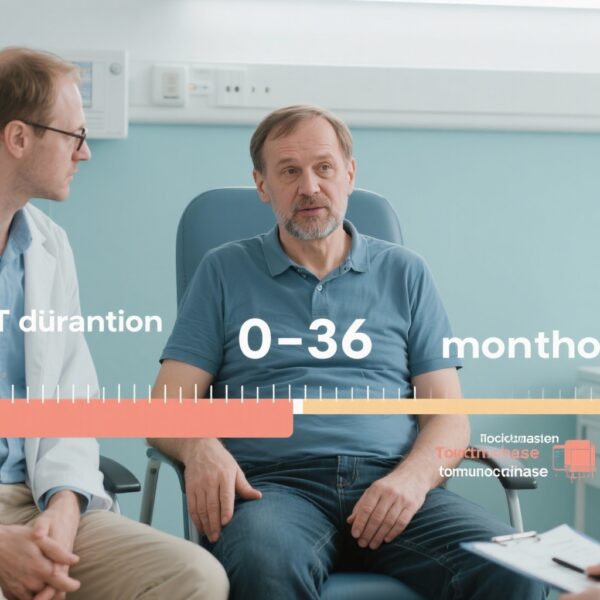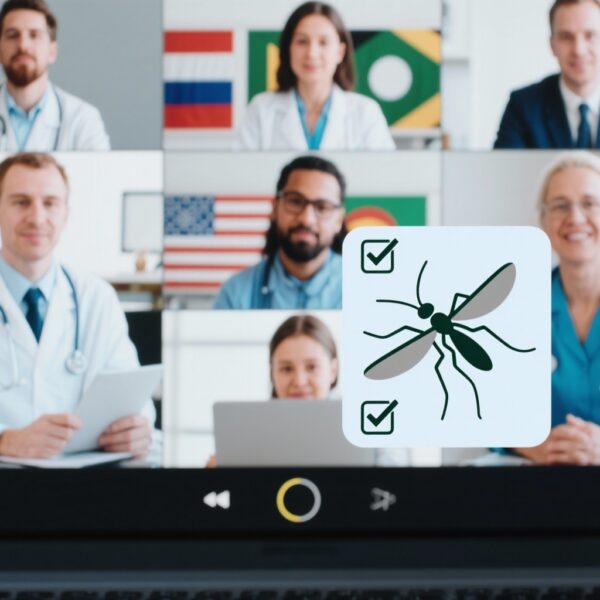Highlight
– In the PLATCOV open‑label phase 2 pharmacometric platform trial, oral ensitrelvir accelerated oropharyngeal SARS‑CoV‑2 clearance compared with no study drug and performed similarly to ritonavir‑boosted nirmatrelvir.
– Median estimated viral clearance half‑lives: 5.9 h (ensitrelvir), 5.2 h (nirmatrelvir), versus 11.6 h (no study drug). Ensitrelvir accelerated clearance 82% (95% CrI 61–104) vs no drug and was 16% slower (95% CrI 5–25) than nirmatrelvir.
– Viral rebound rates were low and not significantly different between groups (7% with nirmatrelvir vs 5% with ensitrelvir; p=0.45). A platform meta‑analysis (n=1157) identified nirmatrelvir and ensitrelvir as having the largest antiviral effects among evaluated small molecules.
Background and clinical need
Since 2021, small‑molecule inhibitors targeting the SARS‑CoV‑2 main protease (Mpro, also called 3CLpro) have been a cornerstone of outpatient antiviral therapy for COVID‑19. Ritonavir‑boosted nirmatrelvir (Paxlovid) demonstrated marked reductions in progression to severe disease among unvaccinated high‑risk patients in randomized clinical trials, and rapid viral suppression is a plausible mechanistic basis for its clinical benefit.
However, effective pandemic preparedness requires multiple safe, affordable and deployable oral antivirals. Important practical challenges for nirmatrelvir include the need for ritonavir boosting (with attendant drug‑drug interaction and supply considerations) and variable access worldwide. Ensitrelvir is a novel oral Mpro inhibitor developed as an alternative to ritonavir‑boosted regimens with the same molecular target, prompting direct pharmacometric comparison in early disease.
Study design
The PLATCOV platform is an open‑label, phase 2, randomized, controlled, adaptive pharmacometric trial designed to evaluate antiviral effects of candidate small‑molecule therapies in early outpatient COVID‑19. Between March 17, 2023 and April 21, 2024, low‑risk adults aged 18–60 years with symptomatic SARS‑CoV‑2 infection of less than 4 days’ duration were enrolled at acute respiratory infection clinics in Thailand and Laos.
Participants were randomized in blocks to multiple contemporaneous arms; the analyses reported focus on three concurrently enrolled groups: ensitrelvir (n=202), ritonavir‑boosted nirmatrelvir (n=207), and no study drug (n=195). Both antivirals were given at their standard 5‑day regimens. The primary pharmacometric endpoint was the oropharyngeal viral clearance rate from day 0 to day 5 in the modified intention‑to‑treat population (patients with at least two days of follow‑up).
Oropharyngeal swabs were collected intensively: four paired swabs on day 0 and two swabs daily from days 1–7, then on days 10 and 14. Viral densities were measured from standardised paired oropharyngeal swab eluates and analysed using a Bayesian hierarchical linear model fit to log10 viral concentrations across the first five days to estimate per‑participant viral clearance half‑lives and comparative effects.
An individual patient data meta‑analysis of all small molecules evaluated within the platform (published results) was also performed, with adjustment for temporal trends in viral clearance.
Key findings
Primary pharmacometric outcomes
Among 604 concurrently randomized participants (ensitrelvir 202, nirmatrelvir 207, no study drug 195), median estimated SARS‑CoV‑2 oropharyngeal clearance half‑lives were:
- Ensitrelvir: 5.9 hours (IQR 4.0–8.6)
- Nirmatrelvir (ritonavir‑boosted): 5.2 hours (IQR 3.8–6.6)
- No study drug: 11.6 hours (IQR 8.1–14.5)
Relative effects from the Bayesian model showed that ensitrelvir accelerated viral clearance by 82% (95% credible interval [CrI] 61–104) compared with no study drug. When compared directly to ritonavir‑boosted nirmatrelvir, ensitrelvir produced viral clearance that was 16% slower (95% CrI 5–25); the credible interval indicates a modest but statistically supported difference favoring nirmatrelvir for the fastest clearance.
Meta‑analysis across platform compounds
An individual patient data meta‑analysis of unblinded small‑molecule arms evaluated within the PLATCOV platform (total n=1157) identified nirmatrelvir and ensitrelvir as producing the largest effects on viral clearance compared with other agents tested in the same framework, after adjusting for temporal changes in baseline viral kinetics.
Viral rebound and other secondary observations
Viral rebound, defined by protocol criteria, occurred in 15/207 (7%) participants who received ritonavir‑boosted nirmatrelvir and in 10/202 (5%) who received ensitrelvir (p=0.45). The small absolute difference was not statistically significant in this sample and aligns with observations that rebound can occur with and without antiviral therapy.
Safety and tolerability
The published summary focuses on antiviral pharmacodynamics rather than formal safety comparisons. Because the study population comprised generally healthy adults aged 18–60 with early disease, conclusions about rare or age‑related adverse effects cannot be drawn here. Detailed safety and adverse event profiles should be consulted in the primary publication and subsequent phase 3 data.
Expert commentary and interpretation
This well‑executed pharmacometric platform study addresses an important practical question: can a non‑ritonavir‑boosted Mpro inhibitor achieve antiviral effects comparable to the established standard of ritonavir‑boosted nirmatrelvir? The trial demonstrates that ensitrelvir meaningfully accelerates oropharyngeal viral clearance compared with no treatment and achieves viral suppression close to that of nirmatrelvir, though median clearance was modestly slower than the boosted drug.
Key strengths include the adaptive platform design, high‑frequency standardized sampling, and prespecified Bayesian modelling of viral kinetics — methods that provide precise estimates of antiviral effect size over the early course of illness. The individual patient data meta‑analysis across the platform helps place these results in context of other small molecules evaluated under similar conditions.
However, several caveats merit emphasis. First, viral clearance rates from oropharyngeal swabs are a pharmacodynamic surrogate and do not equate directly to clinical outcomes such as hospitalization, death or post‑acute sequelae. Although faster viral decline plausibly reduces transmission and progression risk, demonstration of clinical benefit in high‑risk populations requires adequately powered randomized outcome trials.
Second, the trial cohort consisted of younger, low‑risk adults (18–60 years) with very early symptomatic disease (<4 days), so generalizability to older or comorbid patients is limited. Third, the open‑label design may introduce bias in some secondary outcomes, although it is less likely to influence measured viral loads. Finally, viral dynamics may vary by variant; the trial period (March 2023–April 2024) encompasses a shifting variant landscape and the antiviral potency of Mpro inhibitors should be monitored with ongoing viral surveillance.
Biological plausibility and mechanistic notes
Both ensitrelvir and nirmatrelvir inhibit the SARS‑CoV‑2 main protease, blocking a critical step in viral polyprotein processing and replication. Nirmatrelvir requires coadministration with ritonavir to inhibit CYP3A‑mediated metabolism and sustain therapeutic plasma concentrations. Ensitrelvir was developed to provide a potent Mpro inhibitory effect without ritonavir boosting, potentially simplifying administration and avoiding ritonavir‑related drug interactions. While pharmacokinetic advantages are attractive, head‑to‑head safety, interaction and pharmacokinetic data are needed to confirm practical benefits.
Clinical and policy implications
For clinicians and health systems, the PLATCOV results suggest that ensitrelvir is a viable antiviral candidate that produces rapid viral suppression in early symptomatic COVID‑19 and may be an alternative where ritonavir‑based regimens are problematic. Policymakers and procurement bodies should note that multiple effective oral antivirals enhance resilience against supply constraints and provide therapeutic options when drug‑drug interactions limit nirmatrelvir use.
From a research perspective, these findings support progression to larger phase 3 trials with clinical endpoints in high‑risk populations, direct comparative effectiveness studies, and formal assessments of drug‑drug interactions, resistance emergence and variant susceptibility.
Limitations
Summary limitations include the open‑label design, restriction to low‑risk younger adults, reliance on oropharyngeal viral load as a surrogate endpoint, and short primary observation window focused on the first five days. The modest difference in viral clearance speed between ensitrelvir and ritonavir‑boosted nirmatrelvir may or may not translate into clinically meaningful differences in outcomes for high‑risk patients.
Conclusion and next steps
The PLATCOV phase 2 pharmacometric trial demonstrates that ensitrelvir significantly accelerates SARS‑CoV‑2 oropharyngeal viral clearance versus no treatment and has antiviral effects approaching those of ritonavir‑boosted nirmatrelvir. These data support further clinical development of ensitrelvir, including randomized phase 3 trials powered for clinical endpoints in older and comorbid populations, and comparative assessments of safety, drug interactions and resistance. The findings also illustrate the value of pharmacometric platform trials for rapid, rigorous comparison of candidate antivirals.
Funding and trial registration
PLATCOV was funded by the Wellcome Trust through the COVID‑19 Therapeutics Accelerator. ClinicalTrials.gov registration: NCT05041907.
References
1. Schilling WHK, Jittamala P, Wongnak P, et al.; PLATCOV Collaborative Group. Antiviral efficacy of oral ensitrelvir versus oral ritonavir‑boosted nirmatrelvir in COVID‑19 (PLATCOV): an open‑label, phase 2, randomised, controlled, adaptive trial. Lancet Infect Dis. 2025 Oct 10:S1473‑3099(25)00482‑7. doi:10.1016/S1473‑3099(25)00482‑7. PMID: 41082886.
2. Hammond J, Leister‑Tebbe H, Gardner A, et al. Oral Nirmatrelvir for High‑Risk, Nonhospitalized Adults with Covid‑19. N Engl J Med. 2022;386:1397–1408. doi:10.1056/NEJMoa2118542.
3. Owen DR, Allerton CMN, Anderson AS, et al. An oral SARS‑CoV‑2 Mpro inhibitor clinical candidate for the treatment of COVID‑19. Science. 2021;374(6575):1586–1593. doi:10.1126/science.abl4784.
4. Jayk Bernal A, Gomes da Silva MM, Musungaie DB, et al. Molnupiravir for Oral Treatment of Covid‑19 in Nonhospitalized Patients. N Engl J Med. 2022;386:509–520. doi:10.1056/NEJMoa2116044.
5. World Health Organization. Therapeutics and COVID‑19: living guideline. WHO; 2022. https://www.who.int/publications/i/item/WHO‑2019‑nCoV‑therapeutics‑2022.2
6. Centers for Disease Control and Prevention. COVID‑19 Rebound After Paxlovid Treatment. CDC; 2022. https://www.cdc.gov/coronavirus/2019‑ncov/your‑health/rebound.html
AI image prompt for article thumbnail
Close‑up photorealistic image: two different blister packs of oral antiviral pills lying on a clinical tray; in the background a laboratory image of SARS‑CoV‑2 virions and a semi‑transparent overlaid graph showing a falling viral load curve; soft clinical blue palette, sharp focus on pills, slightly blurred background, high realism, editorial style.



